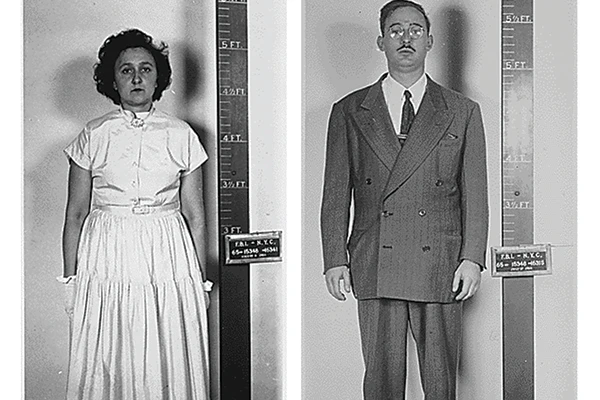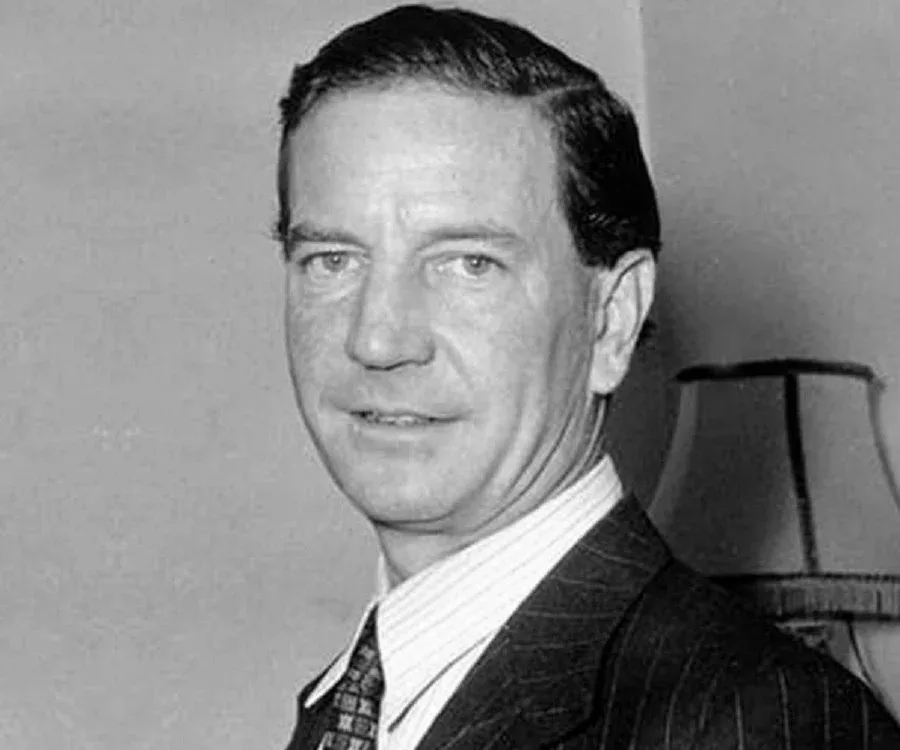
The Cold War, a period of geopolitical tension between the United States and the Soviet Union and their respective allies, was a time of secrets, lies, and covert operations. The world was divided into two ideological camps, and the battle was fought not only on the political and military fronts but also in the shadows. This article delves into the intriguing world of Cold War espionage, shedding light on the spies who risked their lives in the name of national security and the intricate web of deceit they wove.
Espionage played a pivotal role in the Cold War, influencing its course and outcome in significant ways. From high-profile spies who became household names to unsung heroes who operated behind enemy lines, the world of Cold War espionage was as diverse as it was complex. This article explores the various facets of this clandestine world, providing a comprehensive overview of Cold War espionage.
Key Takeaways
- Espionage was a critical aspect of the Cold War, with both sides employing spies to gather intelligence on each other’s military capabilities, technological advancements, and strategic plans.
- The Cold War saw the rise of many notorious spies who played crucial roles in the conflict, such as Kim Philby, the Rosenbergs, Francis Gary Powers, and Oleg Gordievsky.
- Cold War spies used a variety of techniques and tools to carry out their missions, including cryptography, dead drops, disguises, and spy gadgets.
- The secrets and lies of Cold War spies had a profound impact on the course of the Cold War, leading to several major incidents and influencing policy decisions on both sides of the conflict.
- The world of Cold War espionage was a realm steeped in secrets, lies, and deception, where ordinary individuals led extraordinary double lives, risking everything for their nations.
The Secrets and Lies of Cold War Spies
The Cold War era, spanning from 1947 to 1991, was a time of intense political and military tension between the Western Bloc (United States and its NATO allies) and the Eastern Bloc (Soviet Union and its allies in the Warsaw Pact). This period was marked by a lack of direct warfare but was rife with espionage, propaganda, and proxy wars. The secrets and lies of Cold War spies played a significant role in shaping the course of history during this time.

The Role of Espionage in the Cold War
Espionage, the practice of obtaining secret or confidential information without the permission of the holder of the information, was a key element of the Cold War. Both sides employed spies to gather intelligence on each other’s military capabilities, technological advancements, and strategic plans.
- Military Intelligence: Spies were tasked with gathering information about the enemy’s military capabilities, including the size and strength of their forces, their weaponry, and their strategies.
- Technological Espionage: The Cold War was a time of rapid technological advancement. Spies were often tasked with stealing technological secrets, particularly in the fields of nuclear weaponry and space exploration.
- Political Espionage: Spies also played a role in influencing political decisions. They would gather information on the political climate and the plans of the enemy, which would then be used to influence policy decisions at home.
Notable Cold War Spies and their Deceptions
The Cold War saw the rise of many notorious spies who played crucial roles in the conflict. Here are a few notable ones:
- Kim Philby: A high-ranking member of British intelligence, Philby was a double agent for the Soviet Union. He was part of the infamous Cambridge Spy Ring and was responsible for leaking a significant amount of information to the Soviets.
- Julius and Ethel Rosenberg: The Rosenbergs were American citizens who were convicted and executed for passing nuclear secrets to the Soviet Union.
- Francis Gary Powers: A U.S. pilot whose U-2 spy plane was shot down over Soviet airspace, leading to an international incident.
- Oleg Gordievsky: A KGB officer who became a double agent for British intelligence, Gordievsky provided a wealth of information about Soviet operations during the Cold War.
For more detailed information about these spies and their operations, you can visit this link.

Espionage Techniques and Tools
Cold War spies used a variety of techniques and tools to carry out their missions. These included:
- Cryptography: The use of codes and ciphers to communicate secret information.
- Dead Drops: A method of passing information between two individuals using a secret location, thus avoiding direct contact.
- Disguises and False Identities: Spies often assumed false identities and used disguises to blend in and avoid detection.
- Spy Gadgets: From hidden cameras to secret compartments in everyday items, Cold War spies used a variety of gadgets to carry out their missions.
The Impact of Espionage on the Cold War
The secrets and lies of Cold War spies had a profound impact on the course of the Cold War. Espionage activities led to several major incidents and influenced policy decisions on both sides of the conflict. For instance, the information provided by spies like Kim Philby and the Rosenbergs significantly affected the balance of power during the Cold War.
Frequently Asked Questions
1. How were spies recruited during the Cold War?
The recruitment of spies during the Cold War was a complex and secretive process. Intelligence agencies on both sides sought individuals who had access to valuable information and could be persuaded, for various reasons, to betray their own countries.
In many cases, recruitment was based on ideological sympathies. For instance, the Soviet Union often targeted individuals who were sympathetic to communism. On the other hand, Western agencies like the CIA and MI6 looked for individuals who were disillusioned with the communist regime.
However, ideology was not the only factor. Coercion, blackmail, and even simple financial incentives were also used. The recruitment process often involved a careful assessment of the potential spy’s motivations, reliability, and ability to access valuable information.
2. What were some of the most successful spy operations during the Cold War?
There were numerous successful spy operations during the Cold War, many of which had significant impacts on the course of the conflict. One of the most notable was Operation Gold, a joint operation by the CIA and British MI6 to tap into landline communication of the Soviet Army headquarters in Berlin.
Another successful operation was the Venona project, a counterintelligence program initiated by the United States that led to the decryption of thousands of messages sent by intelligence agencies of the Soviet Union. This operation led to the identification and conviction of numerous spies, including Julius and Ethel Rosenberg.
However, it’s important to note that the success of these operations often came at a high cost, including the loss of human lives and strained international relations.
3. What was the role of women in Cold War espionage?
Women played a crucial role in Cold War espionage, serving as operatives, couriers, and even spy masters. They were often overlooked by enemy counterintelligence, which made them effective spies.
One notable example is Virginia Hall, an American spy who worked for the British Special Operations Executive and later the CIA. Despite having a prosthetic leg, she carried out numerous successful missions in occupied France during World War II and continued her work into the Cold War.
Another example is Ursula Kuczynski, a German communist who spied for the Soviet Union under the codename “Sonya”. She operated in several countries and was instrumental in passing on information about the development of the atomic bomb.
4. How did the end of the Cold War affect espionage?
The end of the Cold War did not mean the end of espionage. In fact, in many ways, it simply shifted the focus of intelligence activities. While the ideological conflict between East and West was no longer the primary driver, other factors such as economic competition, regional conflicts, and the threat of terrorism became more prominent.
Intelligence agencies had to adapt to these new realities. The focus shifted from gathering military and political intelligence to economic and technological espionage. Cyber espionage, in particular, has become a major focus in the post-Cold War era.
However, some things remain the same. Espionage is still a game of secrets and lies, and spies continue to risk their lives in the shadows for the sake of their countries.
5. What were some of the consequences faced by caught spies during the Cold War?
The consequences faced by spies who were caught during the Cold War were severe. In many cases, they were subjected to lengthy prison sentences. In some cases, they were even executed.
For example, Julius and Ethel Rosenberg, American citizens who were found guilty of passing nuclear secrets to the Soviet Union, were executed in 1953. Similarly, Oleg Penkovsky, a Soviet military intelligence officer who spied for the UK and the US, was executed by the Soviet Union in 1963.
However, not all spies faced such dire consequences. Some were exchanged
What were the outcomes for spies who were caught? Were all of them punished severely, or were there cases where they were released or exchanged? Please provide specific examples of spies who were exchanged and the circumstances surrounding their exchange.
6. How did the use of technology evolve in espionage during the Cold War?
The Cold War was a period of rapid technological advancement, and this was reflected in the world of espionage. Early in the Cold War, spies relied on relatively simple tools such as hidden cameras and microdots. However, as technology advanced, so did the tools of the trade.
By the 1960s and 70s, spies were using sophisticated electronic devices for surveillance and communication. These included miniature transmitters, satellite communication devices, and advanced encryption machines. The development of the U-2 spy plane, which could fly at high altitudes to avoid detection, was a significant technological achievement of this period.
The use of technology in espionage continues to evolve in the post-Cold War era, with the rise of cyber espionage and the use of advanced data analysis techniques.
7. What were some of the ethical dilemmas faced by spies during the Cold War?
Spies during the Cold War often faced significant ethical dilemmas. They were required to lie, deceive, and betray trust as part of their job. In many cases, they were also required to put their lives at risk.
One of the most significant ethical dilemmas was the question of loyalty. Spies were often required to betray their own countries and their own people for the sake of their mission. This could lead to feelings of guilt and conflict.
Another ethical dilemma was the use of violence. While not all spies were involved in violent activities, some were required to kill or harm others as part of their mission. This could also lead to significant moral and psychological distress.
8. How did Cold War espionage influence popular culture?
Cold War espionage had a significant influence on popular culture, particularly in literature and film. The intrigue, danger, and moral ambiguity of the spy world provided fertile ground for storytelling.
The James Bond series, created by Ian Fleming, is perhaps the most famous example. The series, which began in the 1950s, features a British spy battling against various threats during the Cold War. The success of the James Bond series led to a wave of spy-themed books, films, and television shows.
John le Carré’s novels, which provide a more realistic and cynical view of espionage, are another notable example. His book “The Spy Who Came in from the Cold” is considered a classic of Cold War literature.
9. What were some of the key differences between Eastern Bloc and Western Bloc spies?
While there were many similarities in the methods and objectives of Eastern Bloc and Western Bloc spies, there were also some key differences. These differences were largely due to the different political and social systems in the East and West.
Eastern Bloc spies were often motivated by ideological commitment to communism. They were typically part of the state apparatus and had access to the resources of the state. They were often highly trained and disciplined, with a strong emphasis on secrecy and loyalty.
Western Bloc spies, on the other hand, were often motivated by a combination of ideological commitment to democracy and financial incentives. They were typically part of independent intelligence agencies and had access to advanced technology and resources. They were often more flexible and adaptable, with a greater emphasis on innovation and creativity.
10. How did the public perceive spies and espionage during the Cold War?
Public perception of spies and espionage during the Cold War was complex and varied. On one hand, spies were often seen as heroes, bravely risking their lives for their countries. This was particularly the case in the West, where spies were often portrayed as glamorous and adventurous figures in popular culture
How did the public view spies and espionage during the Cold War? Was the perception consistent across different regions? Were spies generally regarded as heroic figures who risked their lives for their countries, particularly in the West where they were often depicted as glamorous and adventurous in popular culture?
On the other hand, there was also a sense of fear and suspicion associated with espionage. The public was aware that spies could be anyone and anywhere, leading to a climate of paranoia and mistrust. This was particularly the case in the Eastern Bloc, where the state security apparatus was pervasive and intrusive.
Furthermore, high-profile spy scandals and incidents often led to public outrage and demands for justice. The capture and trial of spies like the Rosenbergs in the US and Oleg Penkovsky in the Soviet Union were widely publicized and followed by the public.










3 Comments